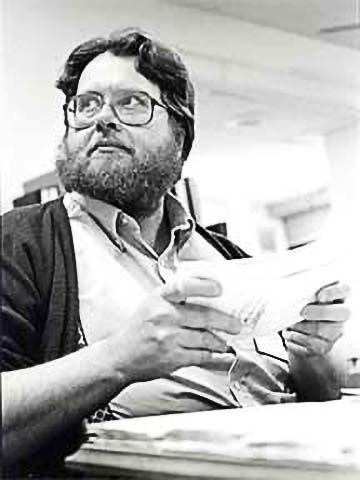1983-1988: Focus on Transition
Three different pieces of federal legislation supported more attention to the transition from school to work. In 1983,
Education of the Handicapped Act Amendments (P.L. 98-199) established and funded services to facilitate the transition of students with disabilities moving from school to the community and/or work settings.
In 1984, the Carl Perkins Vocational Technical Education Act (P.L. 98-524) mandated the development of a full range of quality vocational services and vocational education programs for students with disabilities and expanded existing programs with a 10% "set aside" to support programs for individuals with disabilities.
The 1986 amendments to the Rehabilitation Act specified that states must plan for individuals making the transition from school to work.
The third area of legislative advancement in the 1980s was in the area of assistive technology.

Photo courtesy Ann Marsden
Assistive Technology
In 1988, The Technology-Related Assistance for Individuals with Disabilities Act (PL 100-407) (Tech Act) was passed by Congress. The Tech Act assisted states in developing comprehensive, consumer responsive programs of technology related assistance. It extended the availability of assistive technology to individuals with disabilities and their families. The Tech Act was instrumental in promoting systems change and capacity building. States developed policies, and encouraged public awareness of technology through training and technical assistance.
Throughout the 1990s, state Tech Act projects established centers around their states to help local communities access and use assistive technology. A few years later, the assistive technology loan program became operational. A variety of "models" are used within states to work with credit unions, banks, and savings and loans to loan money to individuals who could not afford to purchase technology on their own.
Up until the late 1980s, the idea of a continuum of day and vocational services was very much alive. In earlier decades, there were only a few steps in the continuum – day activity centers, sheltered workshops and competitive employment. By the 1980s, there was a greater variety of sheltered settings both in disability centers and regular work places.

Photo courtesy Ann Marsden
Moved Through the Continuum
Consistent with the concept of the continuum and the principle of least restrictive environment, through training and skill acquisition, program participants moved through the continuum. The amount of support provided was attached to the setting, not the person. If an individual needed less support, he or she would move to another program location or work environment.
Supported employment was being successfully used for people with severe disabilities in some locations. By and large, however, people with severe disabilities were not seen as ready for even supported employment. Supported employment was another step along the continuum for people who required less support.
This began to significantly change with legislative support in the 1990s. But by the end of the 1980s, change was very gradual. In 1990, just over one quarter of the individuals served in integrated employment by community rehabilitation programs (both competitive and supported) were people with severe disabilities.
Of those in supported employment services, only 13% were people with severe or profound disabilities. In 1990, 82% of the day and employment services provided by MR/DD agencies were segregated and the number of new individuals entering segregated day and employment services in 1991 was greater than the number entering integrated employment.

Photo courtesy Ann Marsden
The Modified Continuum of the 80s


Photo courtesy Ann Marsden
Minimum Wage
Legislation about minimum wage: Section 14 of the Fair Labor Standards Act was amended again in 1986. Most of the people working under special certificates were in the groups that fell below the 50% minimum.
The 1986 changes allowed the wages of workers to be based on their productivity levels (Part 52 "Employment of Workers with Disabilities under Special Certificates").
For instance, if the worker with a disability performed at a 40% productivity rate when compared to an experienced worker without a disability, then the worker with a disability could be paid at 40%.
The General Accounting Office estimated that in 2001 there were 424,000 employees working under 14(c) arrangements and 95% of them worked in sheltered workshops/work activity centers. Of the employers using the 14(c) program, only 9% were regular businesses. The rest were sheltered workshops (84%), hospitals or residential facilities (5%), or schools (less than 2%).

Photo courtesy William Bronston, M.D.
The ongoing argument about whether or not to continue these provisions has echoes of the debate about unpaid labor in institutions – change may leave people without work.
In 2000, Michael Morris summarized the debate:
The strongest voices for continuation of 14(c) defend their position by explaining that 14 (c) offers a needed approach to provide entry-level skills training and development regardless of an individual's productivity and severity of disability. Others have expressed concern that the elimination of 14 (c) will result in persons with the most significant disabilities having less favorable options and therefore increased reliance on Medicaid funded work/day activity that by definition cannot offer income-producing activity."

Photo courtesy Ann Marsden
